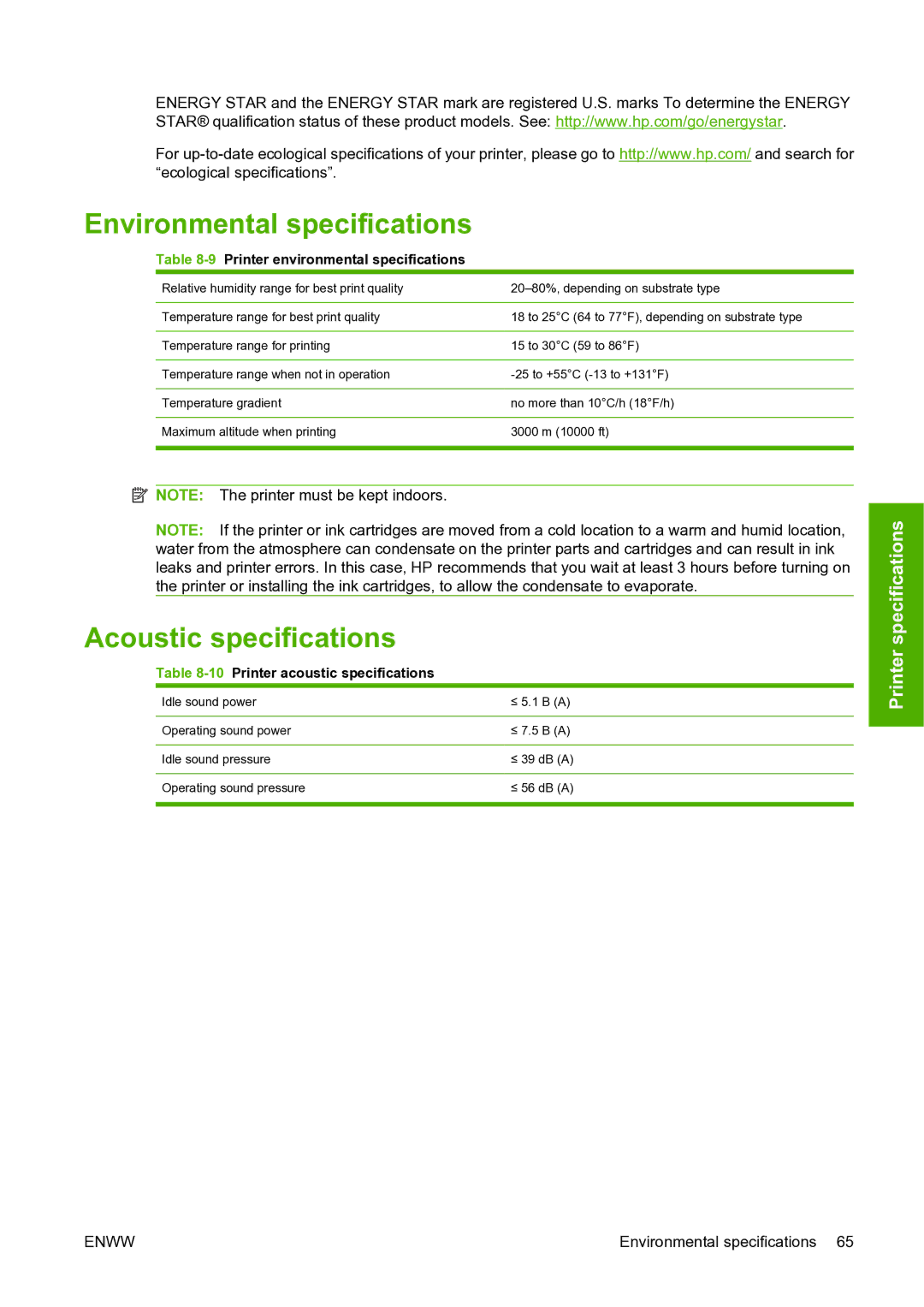
ENERGY STAR and the ENERGY STAR mark are registered U.S. marks To determine the ENERGY STAR® qualification status of these product models. See: http://www.hp.com/go/energystar.
For
Environmental specifications
Table 8-9 Printer environmental specifications
Relative humidity range for best print quality | |
|
|
Temperature range for best print quality | 18 to 25°C (64 to 77°F), depending on substrate type |
|
|
Temperature range for printing | 15 to 30°C (59 to 86°F) |
|
|
Temperature range when not in operation | |
|
|
Temperature gradient | no more than 10°C/h (18°F/h) |
|
|
Maximum altitude when printing | 3000 m (10000 ft) |
|
|
![]() NOTE: The printer must be kept indoors.
NOTE: The printer must be kept indoors.
NOTE: If the printer or ink cartridges are moved from a cold location to a warm and humid location, water from the atmosphere can condensate on the printer parts and cartridges and can result in ink leaks and printer errors. In this case, HP recommends that you wait at least 3 hours before turning on the printer or installing the ink cartridges, to allow the condensate to evaporate.
Acoustic specifications
Table 8-10 Printer acoustic specifications
Idle sound power | ≤ 5.1 B (A) |
|
|
Operating sound power | ≤ 7.5 B (A) |
|
|
Idle sound pressure | ≤ 39 dB (A) |
|
|
Operating sound pressure | ≤ 56 dB (A) |
|
|
Printer specifications
ENWW | Environmental specifications 65 |
